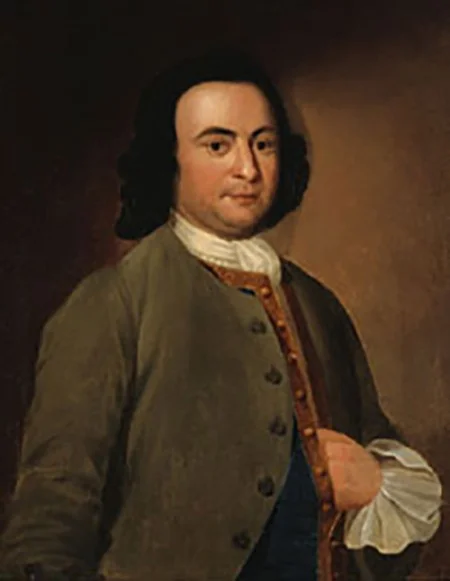The four months in Philadelphia during the Constitutional Convention were fiery and intense.
55 delegates had come together to make small changes to their current government and ended up creating a new one. As Washington sat above this group, observing the chaos, there were five other players that had key roles in the creation of the Constitution. Each of these men brought specific ideas about the role of government in the new nation. In the end, parts of each individual's ideas were taken and put together to create the constitution.
George Washington
Delegate for: Virginia
Contribution: Having been elected unanimously as the president of the Constitutional Convention, Washington’s presence provided a sense of focus and direction. While he originally did not want to be involved with the creation of the Constitution, Washington certainly had a vision for a stronger union. By being present, he was able to oversee the debate and help make that vision a reality.
James Madison
Delegate for: Virginia
Contribution: Famously known as the “father of the Constitution”, James Madison was a driving force behind the convention. He came well prepared for all arguments against the creation of a new government. After the Constitution had been written and signed, Madison then wrote the Federalist Papers with Alexander Hamilton and John Jay. These 85 essays explained the significance of the Constitution, in an effort to persuade states to ratify. Although the need for a bill of rights was advocated by George Mason, Madison also contributed to the Constitution by writing the first 10 amendments that were adopted by the first Congress.
George Mason
Delegate for: Virginia
Contribution: Although he was one of only three delegates not to sign the Constitution, George Mason had a very unique role in its creation. He came to the convention deeply concerned with the amount of power being given to the federal government, and the convention’s unwillingness to end the slave trade. Ultimately, Mason said “I would sooner chop off my right hand” than sign the Constitution without a Bill of Rights. Even though he did not put ink to paper, Mason’s desire to have the freedoms and rights of the country’s citizens specifically stated were immortalized in the first 10 amendments to the Constitution, referred to as the Bill of Rights.
Roger Sherman
Delegate for: Connecticut
Contribution: Credit for one of the core staples of the American government goes to Roger Sherman. He proposed the “Connecticut Compromise” also known as “the Great Compromise.” While large states, like Virginia, advocated for legislative voting based solely on proportional representation, smaller states demanded equal representation of each state in the new congress. Sherman’s compromise proposed that each state would be proportionally represented by population in the House of Representatives, and by an equal number of votes from each state in the Senate. Sherman was also the only founding father to have signed all major documents of the Revolutionary era: The Continental Association of 1774, the Declaration of Independence, the Articles of Confederation, and the Constitution.
William Paterson
Delegate for: New Jersey
Contribution: William Paterson helped to author the New Jersey Plan, which attempted to safeguard the rights of small states. In his plan, Paterson called for each state to have equal representation in Congress. He opposed plans for proportional representation for fear that the interests of small states would be ignored. In reference to proportional representation, Paterson wrote “I would rather submit to a Monarch, to a despot, than to such a fate.” He left the convention in late July, but returned to sign the Constitution in September when aspects of his proposal were included in the Connecticut compromise.
James Wilson
Delegate for: Pennsylvania
Contribution: James Wilson’s most notable contribution to the convention was his desire for a single executive, not a committee. This individual would have absolute veto power to overturn laws created by the legislature. Wilson also favored the direct election of the executive by the people of the United States. Other delegates favored the election of the executive by Congress, and feared that an absolute veto would quickly lead to abuses of power. Arguments over Wilson’s position eventually led to compromises that included limited veto powers of the executive and the establishment of the electoral college. In this compromise, between direct election by the people and the appointment of the president by Congress, the president would be chosen by a group of electors who were selected by the people of their state or the state legislatures.
Learn the details of the Constitutional Convention
Learn MoreBibliography
Richard M. Ketchum. The World of George Washington. (New York, American Heritage Publishing Company, Inc.)





